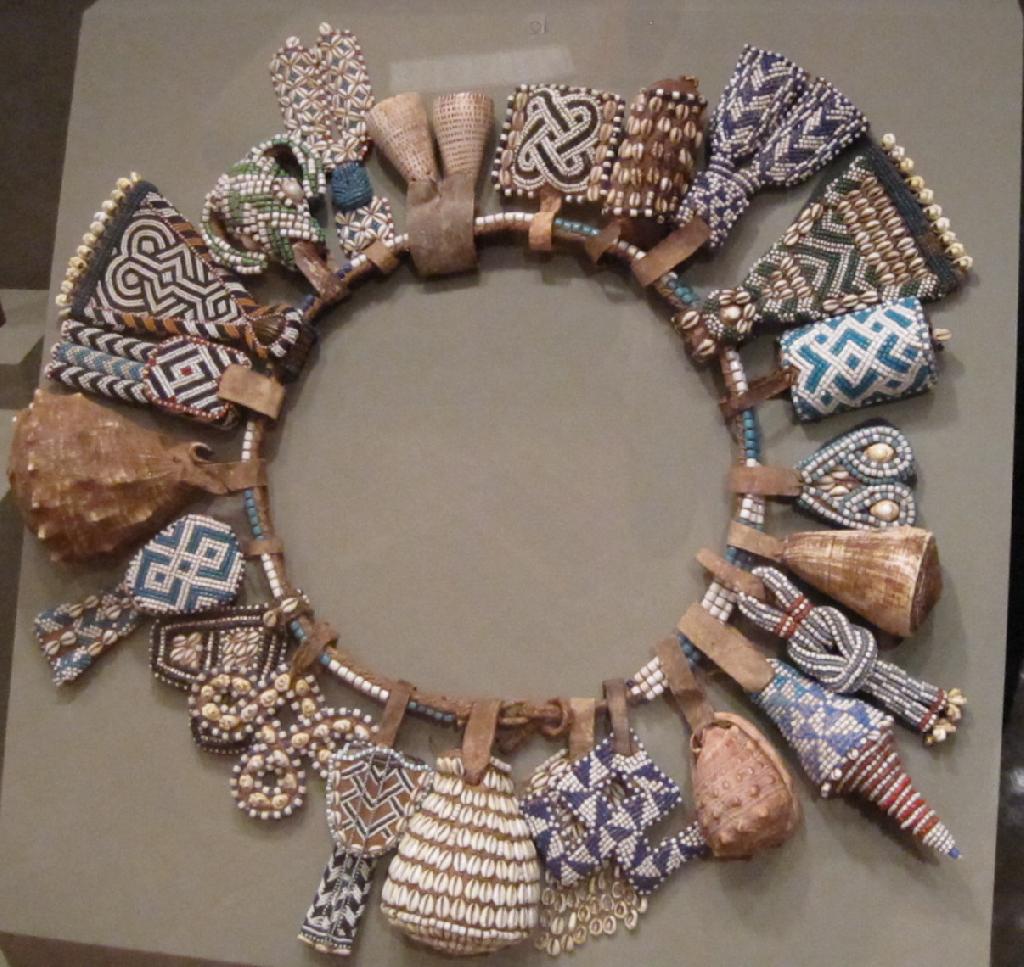
“Iam a link in a chain,” John Henry Cardinal Newman famously mused, “a bond of connection between persons.” His meditation explores the idea that even in the midst of obscurity, insecurity, or even desolation, God is doing “some definite service” through His people. Even the smallest actions can mean that people are gaining strength from each other.Ruth Ann North, founder of jewelry company Refugee Beads, which sells jewelry handcrafted by refugees, exemplifies how exciting it is to be a link in a chain, a bond of connection.
Individually, the actions of jewelry-making are tiny and meticulous.Threading beads onto strings,gripping and twisting wires, sorting and selecting materials. If you’ve made jewelry, you might have suddenly felt like your fingers were gigantic.When the jewelry-making classes in Atlanta, Georgia lead to what North calls “Village Gatherings” in homes and churches in the city and beyond, these minuscule actions open out into the largeness of shared meals and stories, laughter, singing, prayer – as Newman would put it, “connection between persons.”
Refugee Beads began in March 2009. Two months before, Ruth Ann and her husband, Ian, left a particularly biting Chicago winter and moved to the three-mile circle of Atlanta known as the International Village, home to 145 different people groups and tens of thousands of refugees.There, through the North American Mission Board, they hope to demonstrate their belief that God’s redemption of humanity is powerful and complete by nurturing many facets of refugees’ lives – anything from helping adults with English and children with homework to driving kids to drama camps.
Refugee Beads’ goals fit the Norths’ conviction that the arts are a way to understand and heal the whole person. The women not only meet twice a week to learn the art of jewelry-making, but they also eat lunch together and often hike nearby Stone Mountain to continue spending time together.”Refugee Beads is a really encouraging community,” says North.
While jewelry-making sessions sound like a nurturing time – and, honestly, a whole lot of fun – North has pragmatic goals. She hopes to train women in the nuts and bolts of small business management. Selling jewelry allows them to supplement the income they earn working nights at a chicken factory nearly an hour from their homes. Soon, North hopes they will be able to give up this grueling labor.

While there are many refugees North cares for and cares about in Atlanta, she pours her energy into these six women – refugees from Bhutan, Burma, Egypt, and Sudan – because they are all leaders among their people groups, and will be able to start their own businesses, support themselves, and train their communities in the art of jewelry-making. North hopes that in training and mentoring these women, she is starting a chain reaction.She wants to help them to be self-sufficient, since at this point, it is still daunting for them to walk into a store and communicate what they will need to buy.She hopes to remain a mentor even after they begin their own businesses.
When the women sell their handiwork, the Village Gatherings become a rich, communal experience.About once a month, North has been facilitating Village Gatherings wherever the women are invited. It might be someone’s church group, neighborhood, or work group (whatever the Americans consider their village, says North).These gatherings are one of the main opportunities for the refugees to sell their jewelry, but more than that, they are a chance for people to spend time together.
Realizing that “these women are such a gift to the American church,” North sees these gatherings as a way to connect cultures. Americans have so much to give the refugees – financial assistance, English practice, driving lessons, computer literacy – and she watches as giving flows in both directions. It is presumptuous, North insists, to think that if we are comfortable Americans, we have so much more to give. If anyone comes to a Village Gathering expecting to feel like the generous one, she’s in for a paradigm shift. The refugees bring meals they may have spent five hours cooking, sing in their native languages, pray for the Americans and ask the Americans to pray for them, and tell their stories. The value of these connections has been evident in both emotional and practical ways.Once, when a member of Refugee Beads asked a Village Gathering to pray for her sick child, the American women connected her with a clinic where her child was cared for.
Sharing stories is one way that the connection is particularly symbiotic.The refugees are relieved to tell their stories and be understood, and North listens as they add details and complexity to stories as their English improves. She realizes that there are so many facets of these women’s stories that she doesn’t know, and it may take a decade before the women can articulate the story completely. But for right now, “they need someone to hear this story,” says North. On the other end, listening to these stories allows Americans to learn what people around the world are facing, to step out of their own world and experience someone else’s story.

“We See Many Healing Power”
What are the stories these women share? The story of Purna, a Bhutanese member of Refugee Beads, is one example. Purna spent 17 years in a Nepali refugee camp.When she was quite young, the Southern Bhutanese, who were subsistence farmers, were forced to migrate, but not before some 2,000 were tortured, says the site Bhutaneserefugees.com. They found relative safety, though not a warm welcome, in Nepal, as the refugee population climbed to 105,000 by 2007. The Nepali government did not allow the Bhutanese to work outside the camps. Most days, says North, they ate less than what most Americans would feed their house cats.
Though Purna’s family faced hardship there, she also experienced something that many refugees have seen in their camps.Fellow Refugee Beads member Juli, of Burma, put it this way: “We see many healing power.” “Healing power” may fall beyond the limits of what many American Christians believe God will do, and yet Christian refugees insist on what they have seen.Purna experienced the healing of her sister, who suffered violent seizures.
It happened like this. Purna’s family required her to stay at home to watch her sister. This meant that her brother was the one to leave his Hindu family each day and walk miles away to visit a Christian pastor. Speaking with the pastor, Purna’s brother became convinced that God could heal their sister. “Let me ask the pastor to pray,” he said, and urged the pastor to visit their home. Though the family was skeptical, after the pastor’s visit and prayers, her sister gradually healed, and her whole family began to believe.
When Purna was 25, she said goodbye to her parents, doubting she would ever see them again, because when refugees are placed in other countries, there is more emphasis on getting them out than on keeping families intact.

Symbolically Small
Contemplating the stories of refugees, it is easy to view any actions an ordinary person might take as tiny, a drop in the bucket. Perhaps it can be seen as symbolic, then, that the refugees sell something as intricate as daisy-patterned barrettes, made with beads nearly as small as flower seeds. The actions required to make this would be delicate and small, yet in a wooden bowl on a table at a Village Gathering, joined with other beadwork and jewelry, this small flower means that hope continues to bloom.
Refugee Beads jewelry is available online at refugeebeads.com, in Chicago at Novum Shop, and in Atlanta at the Atlantic Station Market. Want to get even more involved? Become a fan of Refugee Beads on Facebook, or contact Ruth Ann North (refugeebeads@gmail.com) to host a Village Gathering or send beads and other supplies.




